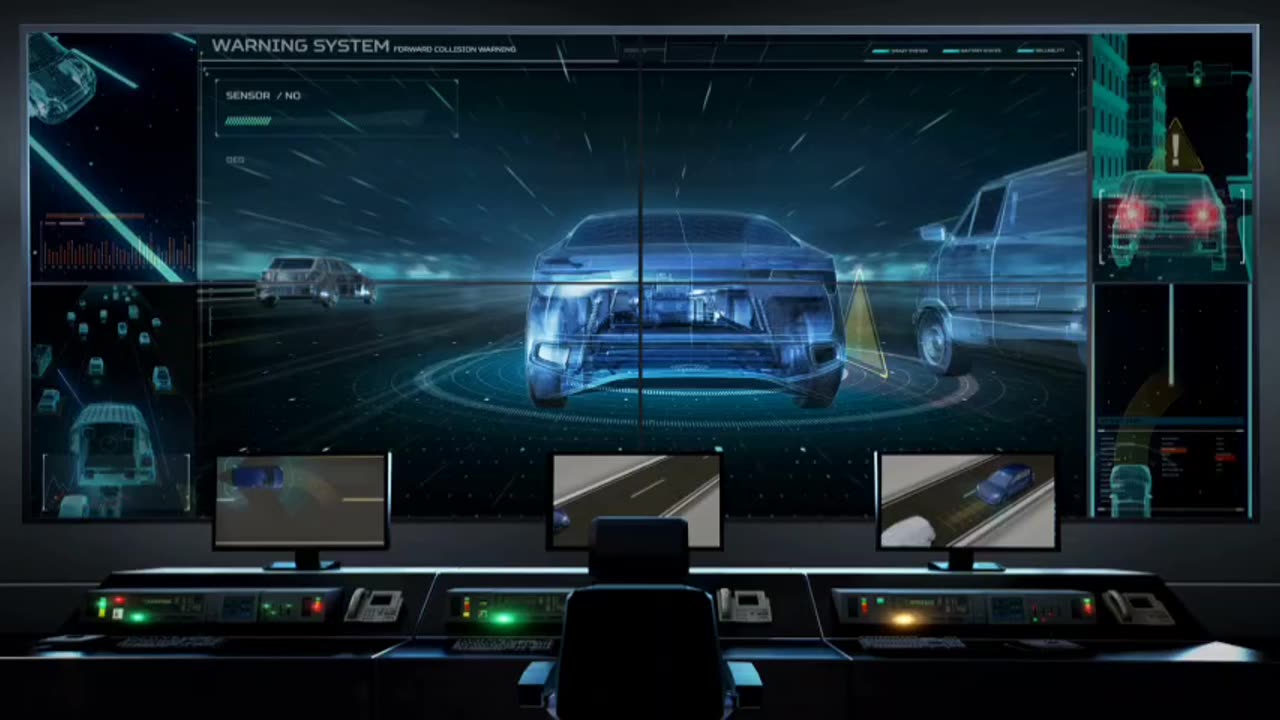Premium Only Content

Converting Gasoline Combustion Engines To Hydrogen
Project Breakdown: Converting an Existing Gasoline Vehicle to Hydrogen Combustion**
1. **Overall Project Concept**
**Question:** What is the goal of this conversion project?
**Answer:** Our goal is to convert an existing gasoline combustion vehicle into a hydrogen combustion vehicle. We will use a water storage tank as the primary fuel source, employing PEM fuel cells to convert water into hydrogen and oxygen for the engine’s combustion process.
2. **Energy Supply for Electrolysis**
**Question:** What powers the PEM fuel cells for hydrogen production?
**Answer:** A 24-volt lithium-ion battery stack will supply power to the PEM fuel cells. This power source will draw energy from the vehicle's alternator while driving, ensuring a continuous supply for efficient hydrogen production on demand.
3. **Hydrogen Production Process**
**Question:** How do we generate hydrogen from water?
**Answer:** Our system will leverage PEM fuel cells to perform electrolysis, splitting water into hydrogen and oxygen using electricity from the battery stack. The hydrogen produced will then be directed to the combustion engine, while the oxygen can aid in enhancing the combustion process.
4. **Fuel Mixture Management with Air Pump**
**Question:** How will we optimize the air-hydrogen mixture for combustion?
**Answer:** An air pump will be integrated into the system to increase the airflow into the closed-loop carburetor system. This will ensure an adequate supply of air for combustion, allowing the AI-controlled carburetor to maintain an optimal hydrogen-to-air mixture for effective combustion in the engine.
5. **Water Supply for Electrolysis**
**Question:** How do we ensure sufficient water supply for the electrolysis process?
**Answer:** A dedicated water pump will be implemented to provide the necessary amount of water from the storage tank to the PEM fuel cells, facilitating continuous electrolysis for hydrogen production.
6. **Safety Measures in the System**
**Question:** What safety precautions will be in place?
**Answer:** The system will incorporate spark arresters to prevent unwanted ignition, one-way valves to control pressure, and an efficient cooling system to manage temperatures effectively. Additionally, AI will monitor real-time data to detect leaks or unsafe conditions, ensuring a safe operating environment.
7. **Integration of Cooling and Air Conditioning Systems**
**Question:** How will we handle thermal management?
**Answer:** Existing vehicle cooling and air conditioning systems will be adapted to manage the operating temperatures of both the engine and the PEM fuel cells. This adaptation helps prevent overheating and maintain efficiency without extensive modifications.
8. **Role of AI in Monitoring and Control**
**Question:** How does AI enhance the efficiency and safety of the system?
**Answer:** AI will continuously monitor parameters such as temperature, pressure, and mixture ratios. By mimicking existing fuel mixture profiles, AI can fine-tune the air and hydrogen flow rates to ensure optimal combustion, achieving efficiency without significant recalibrations of engine timing or compression.
9. **Environmental Impact of Hydrogen Combustion**
**Question:** How does transitioning to a hydrogen system impact environmental considerations?
**Answer:** Adopting a hydrogen combustion system significantly reduces carbon emissions, as hydrogen is a non-carbon fuel. This approach eliminates the need for components like catalytic converters, typically required for exhaust gas treatment in gasoline engines, contributing to cleaner air and lower environmental impact.
10. **Utilization of Existing Vehicle Features**
**Question:** What modifications will be necessary for the existing vehicle?
**Answer:** Modifications will primarily involve integrating the hydrogen production system, including the water and air pumps, while minimizing extensive changes to existing vehicle components. Most of the vehicle's operational systems, such as cooling and air conditioning, will remain intact with minimal adjustments.
11. **Testing and Validation Procedures**
**Question:** How will we test the converted vehicle?
**Answer:** A phased testing approach will be employed, starting with component-level assessments for the PEM fuel cells and pumps. We will also evaluate the carburetor's performance and ultimately test the complete system in various driving conditions to ensure reliability and efficiency.
-
 2:47:03
2:47:03
Patriot Underground
19 hours agoTruthStream RT w/ Joe & Scott (7.30.25 @ 5PM EST)
42.7K24 -
 42:04
42:04
World2Briggs
16 hours ago $1.71 earnedRanking All 50 States By Natural Beauty Will Shock You!
10.4K1 -
 42:46
42:46
The Kevin Trudeau Show Limitless
21 hours agoManifest Anything: The Secret Teachings of Kevin Trudeau
6.63K3 -
 LIVE
LIVE
Culture Crack
2 hours ago🔴 FINISHING Games | Metal Gear Rising, Prototype 2, Callisto Protocol + Online Safety Act Discussion
38 watching -
 5:18:09
5:18:09
saiyagamertv
6 hours agoIm ready to RUMBLE lets WIN!!
3.27K -
 13:05
13:05
IsaacButterfield
1 day ago $1.11 earnedPedro Pascal Needs To Stop
9.51K5 -
 11:25
11:25
Nikko Ortiz
15 hours agoMost Painful Fails
30.1K23 -
 LIVE
LIVE
TheDonOfEverything
8 hours agoLet's Play Wuchang: Fallen Feathers - Part 3 | LIVE ON RUMBLE (WalkThrough)!
71 watching -
 LIVE
LIVE
DoldrumDan
3 hours agoNEW NIGHTREIGN UPDATE?! LEVEL 1 FINAL BOSS CHALLENGE RUN HITLESS INTO ELDEN RING DLC
10 watching -
 5:37
5:37
Rena Malik, M.D.
22 hours ago $0.28 earnedTamsulosin and Finasteride SIDE EFFECTS that will SHOCK YOU! | Are they reversible?!
3.85K